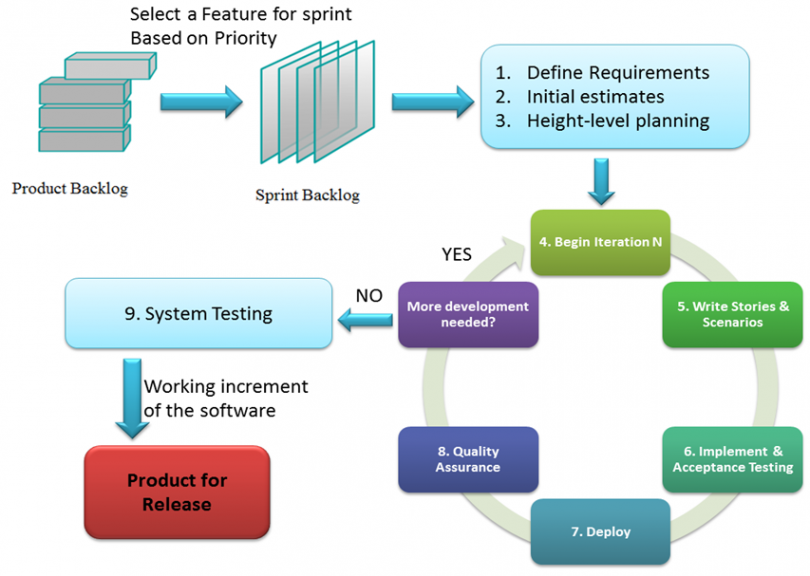Most of us are familiar with the concept of Agile project development (an incremental system whereby self-organizing teams are organized to collaborate regularly and reinforce project concepts and deadlines). But what happens when a more elastic approach to Agile is required? Scrum is this flexible approach; through Scrum, it is possible to not only lay out a more refined release timetable, but also to steer development itself in different directions.
Perhaps the real question is; why would anyone need to a system for project development which features ongoing assessment (like Scrum)? Part of the success and popularity of Scrum can be traced back to the fact that so many people use it to both provide supple solutions as well as establish stability. In a Scrum-based project, regular meetings whereby individual teams and members produce progress reports are common. These reports are in turn shared with other teams in addition to those who might be investing in said project (stakeholders). Furthermore, all plans are carried out in accordance with pre-established principles, yet at the same time, any changes that might be enacted are based directly upon real data gathered. In this way, Scrum allows a team to make much more accurate predictions and progress – with regards to how a project will and should turn out.
Scrum is a perfect compliment to software development applications and is seen as one of the absolute best ways to micro-manage a team. Through Scrum, leaders can take better advantage of Agile itself, ensuring that no details are left unaddressed and of course, that progress and abilities are a more distinct reflection of one’s budget, so to speak. Today, almost every major software development institution utilizes Agile and Scrum in their daily operations. To make a long story short, Scrum is now an essential fixture of modern software development.
Agile Software Development with Scrum
It is not that far-fetched to say that scrum totally revolutionized software development; the question is really, how did scrum achieve this exactly? In case you have no previous experience with, or knowledge of scrum, here’s a little primer:
Scrum is an agile methodology which creates self-organizing teams which engage in cross-functional processes. A project managed with scrum is divided into “sprints”, which are essentially 2-4 week spaces between meetings whereupon different groups are tasked with achieving specific goals during those deadlines. At the end of each sprint, the scrum master will oversee a meeting in which components are combined and everything is shared. During this time it is also common for changes to be effected, particularly if the needs or desires of the customer are shifting (perhaps due to market activity, demand, or the emergence of new ideas / technologies). Scrum is an attempt to completely simplify the development of software so that everyone can truly get their priorities straight, and maybe even reinforce the work being performed by their team members as well.
For software development projects, scrum is like a breath of fresh air. The increased transparency that it brings to the forefront allows all team members (even those from “opposite ends of a project” as it were) to gain greater insight into how everything will eventually “fit together”. Scrum more or less allows a software development team to finish projects in an almost “jigsaw-like” fashion, which is beneficial for a number of reasons. Likewise, the ability of everyone to basically see what’s going in every group and department gives the entire organization increased opportunities for enacting changes. Better solutions can come from anywhere, and at any time. For example, a post sprint meeting might allow another team to offer up a simple suggestion which solves a difficult problem for their counterpart(s), as is often the case. The end result of this increased cross-communication is decreased development times and increased overall efficiency.







